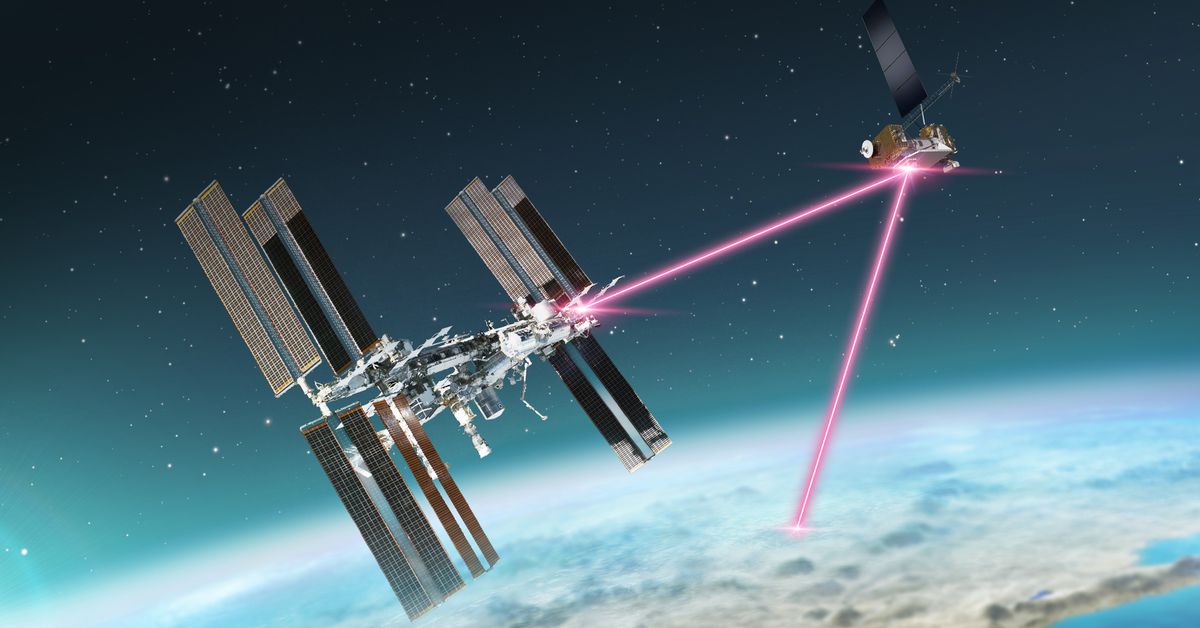/cdn.vox-cdn.com/uploads/chorus_asset/file/25544503/illuma_t_to_lcrd_003.jpg)
NASA researchers have successfully tested laser communications in space by streaming 4K video footage originating from an airplane in the sky to the International Space Station and back.
The feat demonstrates that the space agency could provide live coverage of a Moon landing during the Artemis missions and bodes well for the development of optical communications that could connect humans to Mars and beyond. NASA normally uses radio waves to send data and talk between the surface to space but says that laser communications using infrared light can transmit data 10 to 100 times faster than radios.
Engineers fitted an airplane with a portable laser terminal, then it flew over Lake Erie and sent data back to the center in Cleveland. The data was then transmitted through a terrestrial network to NASA’s New Mexico test facility, where scientists controlled the process of beaming data up to the agency’s Laser Communications Relay Demonstration (LCRD) satellite 22,000 miles away. The LCRD then relayed it to the ILLUMA-T (Integrated Laser Communications Relay Demonstration Low Earth Orbit User Modem and Amplifier Terminal) on the ISS.
Although Artemis missions have been delayed, the fourth one that takes humans back to the Moon is still on track for 2028. By then, we might see clear 4K livestreams of astronauts on the Moon displayed on mainstream 8K TVs.
Services Marketplace – Listings, Bookings & Reviews
